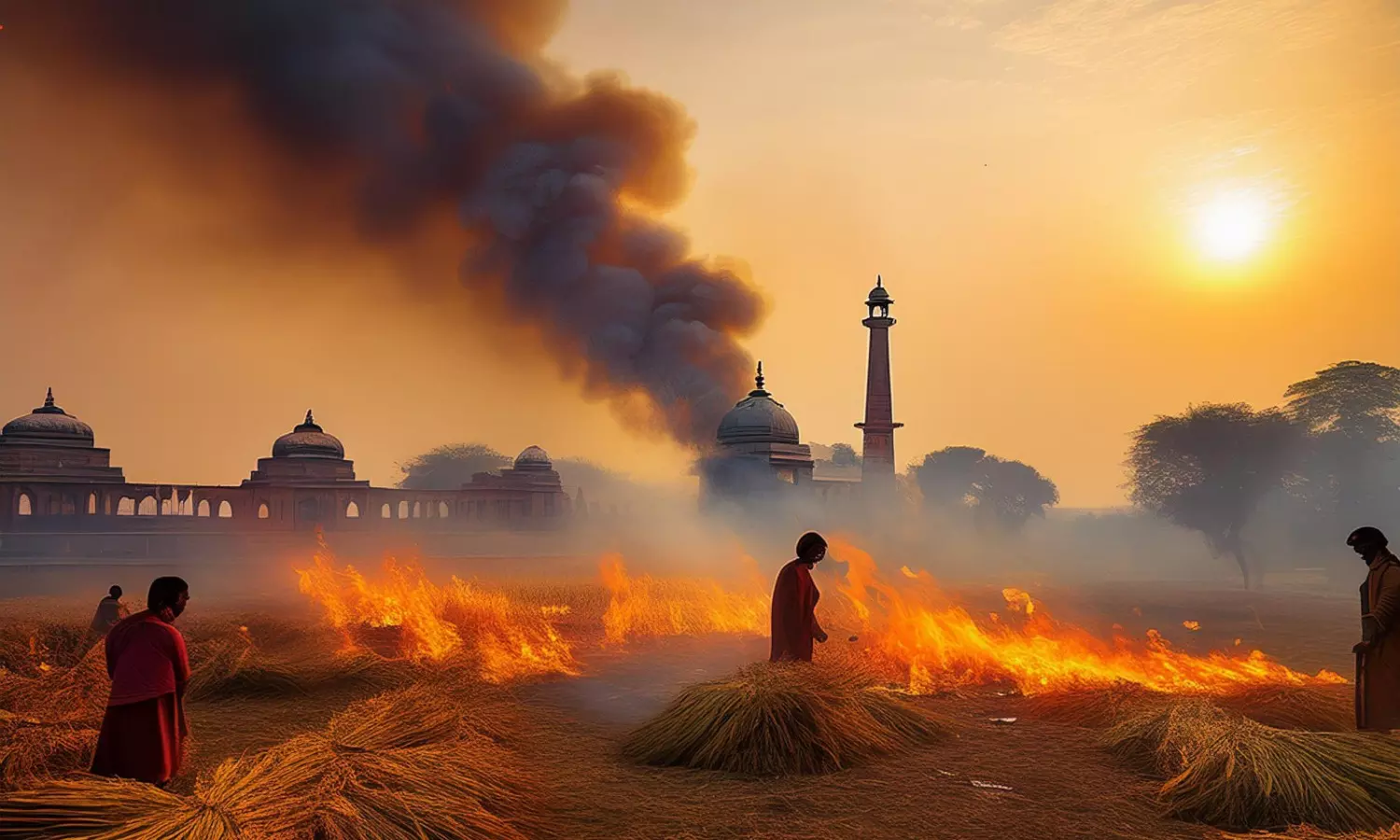Know alternative methods to tackle stubble burning
In response to rising air pollution levels in Delhi, the central government has decided to impose a double penalty on individuals involved in stubble burning.

In response to rising air pollution levels in Delhi, the central government has decided to impose a double penalty on individuals involved in stubble burning. This decision comes in the wake of growing concerns over pollution caused by stubble burning in neighboring states, which has been a significant contributor to deteriorating air quality in the capital.
The move follows a strong reprimand from the Supreme Court, prompting the government to take a stricter stance. According to the new regulations, farmers with more than five acres of land will face a fine of Rs 30,000, while those with less than two acres will incur a penalty of Rs 5,000. Farmers with land between two and five acres will be fined Rs 10,000.
The government has implemented this measure to curb the rising pollution levels that worsen every winter, making it increasingly difficult for Delhi's residents to breathe.
Reason for stubble burning
Paddy stubble burning is predominantly practiced in the Indo-Gangetic plains of Punjab, Haryana, and Uttar Pradesh to clear the fields for the sowing of the rabi crop. In Punjab and Haryana, the paddy crop is harvested from the first to the last week of October. Following this, farmers begin sowing wheat from the first week of November and continue until mid-December.
The primary reason for stubble burning is the limited time available between the harvesting of paddy and the sowing of wheat. This narrow 2-3 week window is crucial, as any delay in sowing wheat can negatively impact the crop yield.
Impact
Pollution: Stubble burning releases harmful pollutants into the atmosphere, including toxic gases such as carbon monoxide (CO), methane (CH4), carcinogenic polycyclic aromatic hydrocarbons, and volatile organic compounds (VOCs). These pollutants spread through the air, degrading air quality and posing serious health risks to people by contributing to the formation of dense smog.
Soil Fertility: The burning of stubble depletes soil fertility by destroying essential nutrients in the soil. The combustion of the husk reduces the organic matter that would otherwise enrich the soil.
Heat Penetration: The heat generated by stubble burning penetrates the soil, leading to increased erosion, the loss of beneficial microbes, and a reduction in moisture levels, all of which harm the soil's long-term health.
Alternative
Bio Enzyme - PUSA: The Indian Agricultural Research Institute has developed a bio-enzyme called PUSA to tackle stubble burning. When sprayed, it decomposes the stubble in 20-25 days, turning it into manure that improves soil health. It also increases organic carbon in the soil and reduces fertilizer costs for the next crop cycle.
Palletisation: Paddy straw can be dried, converted into pellets, and mixed with coal to be used as fuel in thermal power plants and industries. This helps save coal and reduces carbon emissions.
Happy Seeder: Instead of burning stubble, the Happy Seeder, a tractor-mounted machine, cuts and lifts rice straw, sows wheat into the soil, and deposits the straw as mulch.

